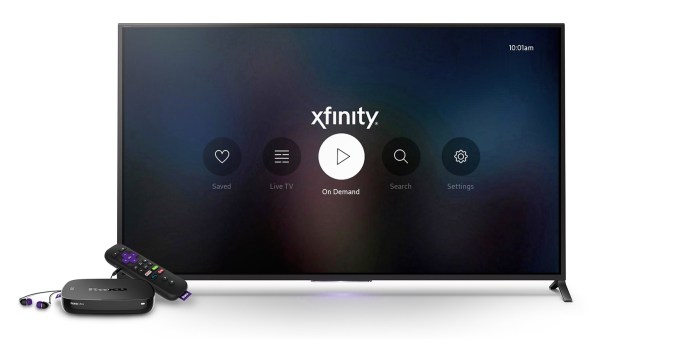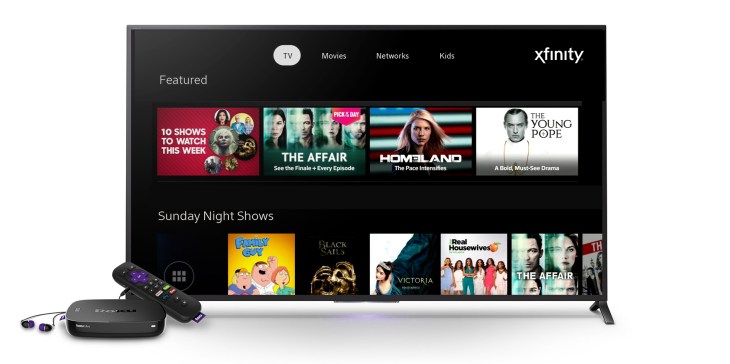There’s a bit of confusion over how cable operator Comcast will treat Roku devices on its network, in terms of the pricing. As Variety spotted when the new Xfinity TV app went live earlier this week, it appears that additional fees would be levied for those using Roku devices to access Comcast’s TV service, thanks to a note on the support pages on Comcast’s website.
Variety has the details technically correct – Comcast will charge “additional outlet” fees on Roku devices after the TV app exits beta. And during the beta, the Roku device can’t be used as a primary outlet due to “technical limitations,” Comcast had said.
However, it’s not being clearly reported as the news of these fees spread, that customers who replace their cable box with the Roku won’t actually incur any additional fees.
Consider this then, your PSA: If you want to swap your Comcast cable box for a Roku, the fees assessed will be the same as if you chose to bring your own CableCARD-compatible device to the service, like a TiVo.
Comcast currently includes one “primary outlet” with its Xfinity TV subscription. If you opt to bring your own equipment – like CableCARD-powered TiVo or, now, a Roku – you’ll receive a $2.50 credit on your bill.
Beta customers can’t take advantage of this credit yet, because during the trial period the TV app still needs to be on the same Wi-Fi network as a Comcast set-top box. After launch, however, customers can ditch Comcast’s equipment, and stick with just Roku. No extra fees will be assessed.
The fees come into play if you continue to use the Roku in addition to your Comcast set-top box after the beta trial wraps. At that point, Comcast will treat the Roku device like any other “additional outlet.” That additional outlet incurs a $9.95 fee, minus the bring-your-own-device credit of $2.50 for using a Roku, instead of Comcast’s box. This is also how a secondary outlet that connects to Comcast’s network via a TiVo would be charged and credited.
While additional outlet fees are generally detested, this is how Comcast has always done business. It hasn’t gone out of its way to gouge Roku owners with new fees – it’s just assessing the same ol’ fees that any CableCARD user before would have had to contend with.

But all the grumbling over the extra fees highlights one of the problems with the cable industry today that the proposed cable box overhaul had aimed to address. The FCC, under prior commissioner Tom Wheeler, had proposed rules that would have allowed any companies to make their own set-top boxes that worked with any cable provider’s TV service.
After a ton of industry pushback, that was later scrapped in favor of a more moderate plan that would have required cable providers to offer free streaming apps on major platforms, like Roku. This deal is basically dead now, though, since Ajit Pai has stepped in to become next chairman of the Federal Communications Commission, replacing Wheeler.
With the FCC no longer pushing the cable industry to embrace streamers, the major players have time to figure out their own strategies for the cord cutting era. For some, that means launching internet TV services, like Dish’s Sling TV or Comcast’s less broadly available Stream TV. These services, however, will have to compete with newer arrivals, like PlayStation Vue, AT&T’s DirecTV Now and Hulu’s soon-to-launch live TV option.
The increased competition means that cable companies only have so long before the majority of their remaining user base rebels against being nickel-and-dimed for things like “an extra outlet” and set-top boxes, and just switches off their service for good.
